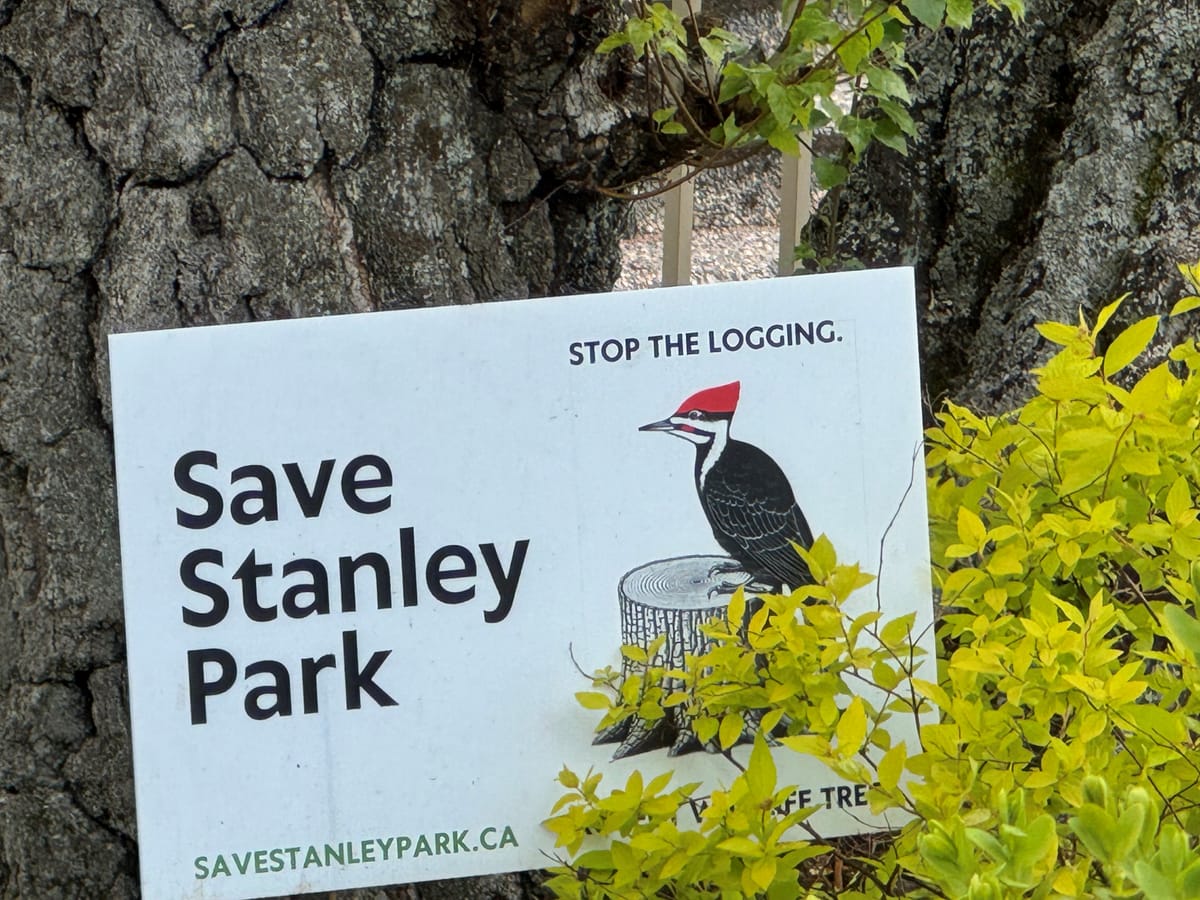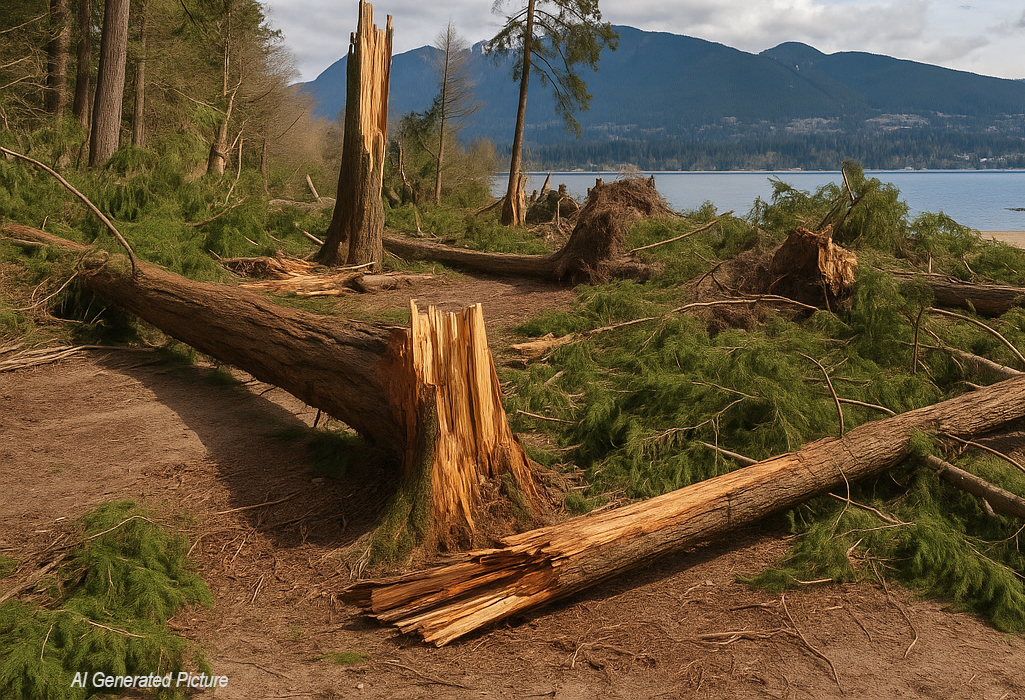
✍️ By Karalee Greer | WBN News – Kitsilano | April 30, 2025
I keep seeing this sign around Kitsilano. Stanley Park is one of my favourite places to bike, walk or run. Being curious, I want to be up-to-date about what is happening in Stanley Park.
Stanley Park, Vancouver’s beloved 405-hectare urban forest, is facing a wave of ecological challenges that have brought logging and conservation practices into the spotlight. From invasive infestations and climate stress to devastating storms, the park’s landscape is being reshaped by both natural and human responses.
🌲 Historical Logging and Forest Composition
Before it was established as a park in 1888, Stanley Park underwent logging in the mid-1800s. Edward Stamp’s logging operations at Brockton Point cleared about 40 hectares—land that now holds the Brockton Oval. This early disturbance altered the natural balance of tree species, leading to an overrepresentation of western hemlock—a species particularly vulnerable to disease and infestation.
https://www.thewestendjournal.ca/blog/2025/3/1/stanley-park-notebook
💨 Storm Damage and the Northeastern Blowdown
In December 2006, a record-breaking windstorm tore through Stanley Park, especially impacting the northeastern section near the Lions Gate Bridge. Winds exceeding 115 km/h toppled over 10,000 trees, leaving entire hillsides bare and sparking safety and replanting efforts. The storm highlighted the park’s vulnerability to climate extremes and led to the development of the first comprehensive forest management plan in 2008.
https://vancouver.ca/parks-recreation-culture/stanley-park-restoration.aspx
🐛 Recent Logging: Looper Moth & Climate Impact
In 2023–2024, the western hemlock looper moth killed approximately 160,000 trees, primarily western hemlock, already weakened by climate-related stress. The dry summers and milder winters helped the infestation thrive.
Logging these dead and dying trees is necessary to prevent falling hazards, protect trails, and maintain long-term forest health. Many logs are repurposed for habitat, cultural use, or left as nurse logs to feed the forest floor.
This article is definitely worth the read. Stanley Park still has old growth trees! https://www.thewestendjournal.ca/blog/2021/9/1/stanley-park-notebook?utm_source=chatgpt.com
Read this article for the Stanley Park Forest Management Plan City of Vancouver
🌱 The Debate: Logging vs. Protection
While the City’s phased approach includes ecological restoration, some local groups and signs (like SaveStanleyPark.ca) call for more transparency and alternatives to clearcutting. Critics argue selective removal and habitat-sensitive methods should be used more consistently.
https://watershedsentinel.ca/article/stanley-park-is-falling/
Read this article from the POV of https://savestanleypark.ca/
🔍 Conclusion
From centuries-old logging scars to modern climate stressors, Stanley Park’s evolving ecosystem presents a delicate balance between public safety and ecological integrity. Protecting this forest for future generations will require informed decisions, community engagement, and resilient strategies in a changing climate.

Tags: #WBN News -Kitsilano #Karalee Greer #Kitsilano #Stanley Park #Urban Forestry #Ecological Restoration



